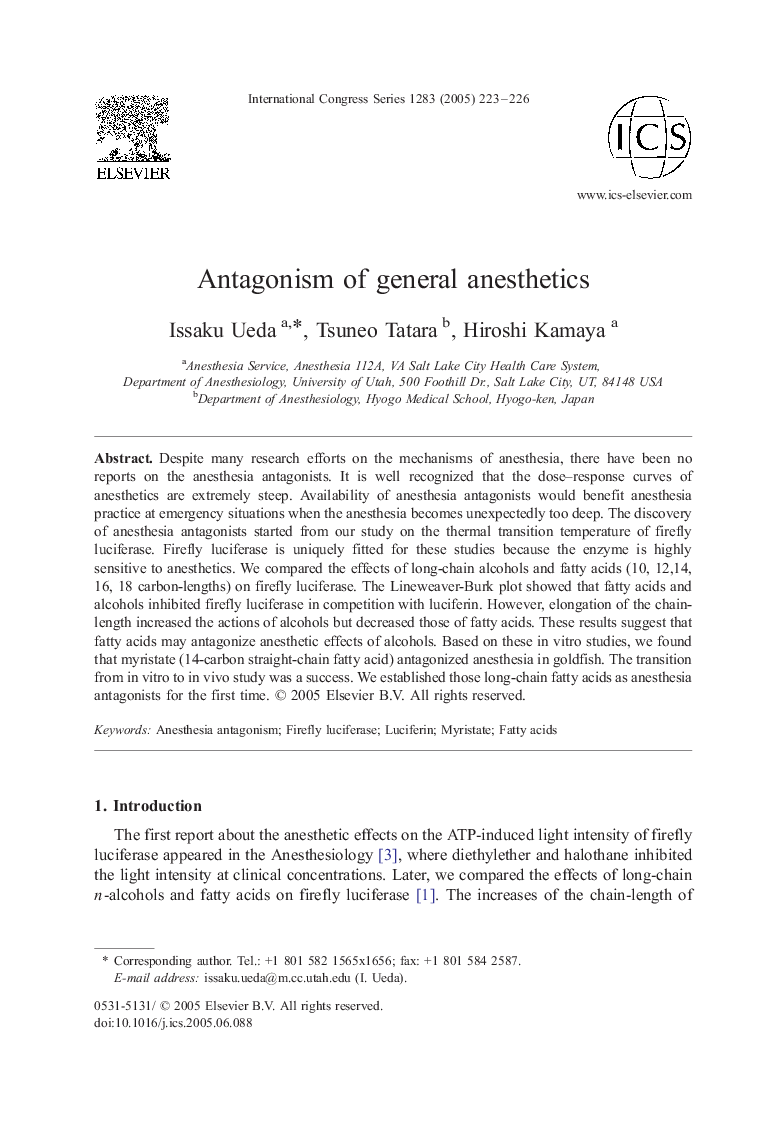| Article ID | Journal | Published Year | Pages | File Type |
|---|---|---|---|---|
| 9021508 | International Congress Series | 2005 | 4 Pages |
Abstract
Despite many research efforts on the mechanisms of anesthesia, there have been no reports on the anesthesia antagonists. It is well recognized that the dose-response curves of anesthetics are extremely steep. Availability of anesthesia antagonists would benefit anesthesia practice at emergency situations when the anesthesia becomes unexpectedly too deep. The discovery of anesthesia antagonists started from our study on the thermal transition temperature of firefly luciferase. Firefly luciferase is uniquely fitted for these studies because the enzyme is highly sensitive to anesthetics. We compared the effects of long-chain alcohols and fatty acids (10, 12,14, 16, 18 carbon-lengths) on firefly luciferase. The Lineweaver-Burk plot showed that fatty acids and alcohols inhibited firefly luciferase in competition with luciferin. However, elongation of the chain-length increased the actions of alcohols but decreased those of fatty acids. These results suggest that fatty acids may antagonize anesthetic effects of alcohols. Based on these in vitro studies, we found that myristate (14-carbon straight-chain fatty acid) antagonized anesthesia in goldfish. The transition from in vitro to in vivo study was a success. We established those long-chain fatty acids as anesthesia antagonists for the first time.
Related Topics
Life Sciences
Biochemistry, Genetics and Molecular Biology
Molecular Biology
Authors
Issaku Ueda, Tsuneo Tatara, Hiroshi Kamaya,
